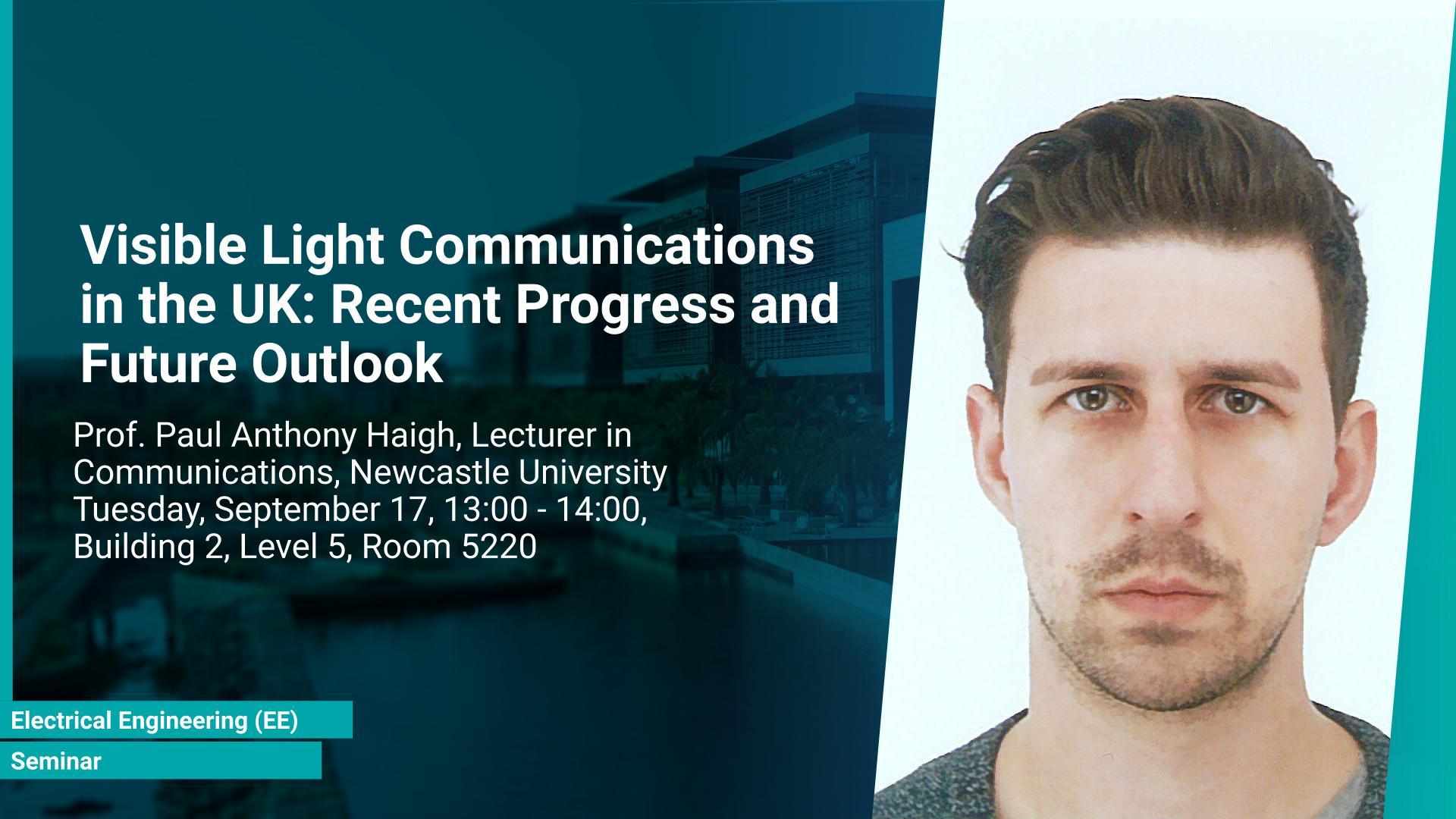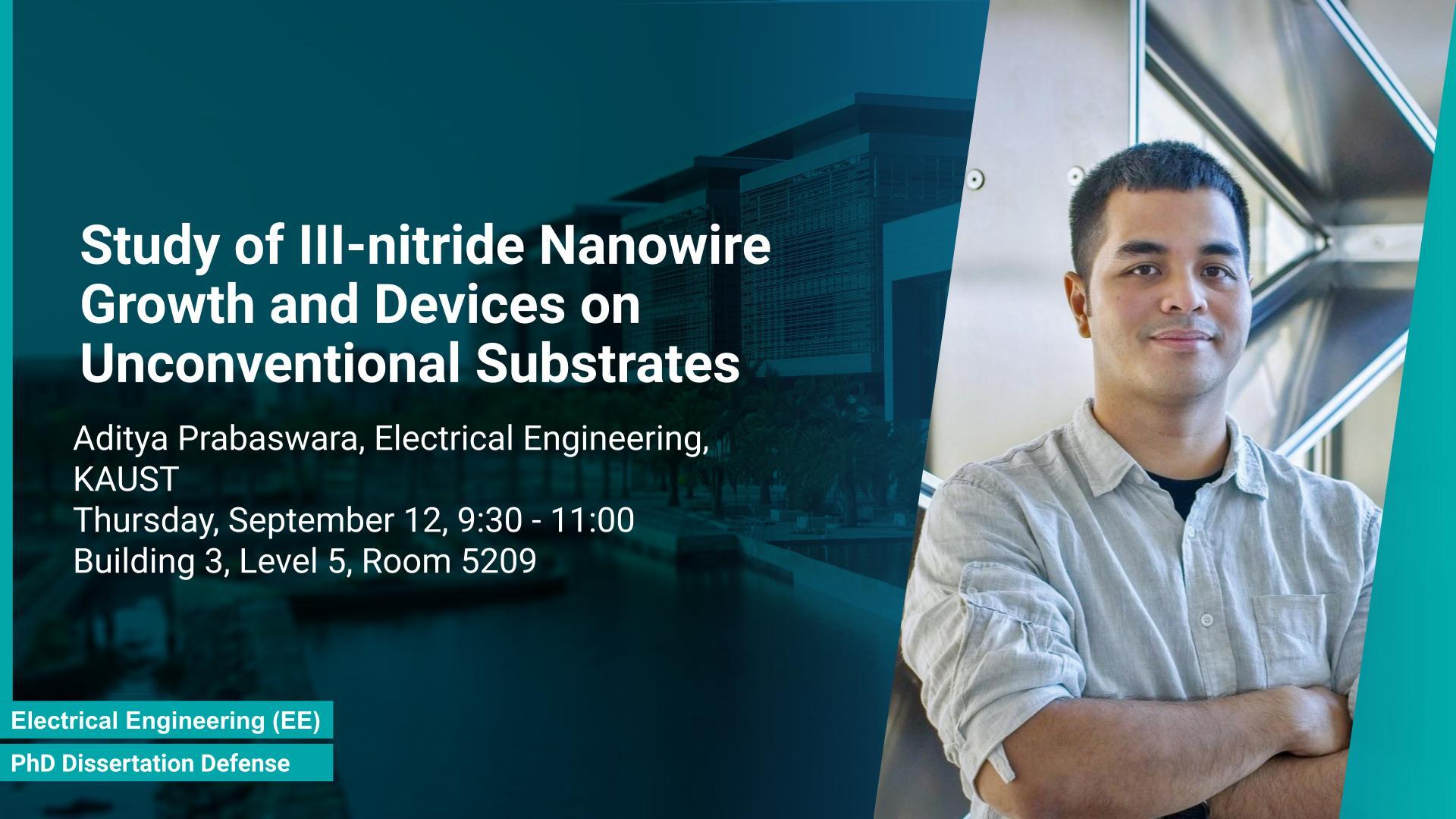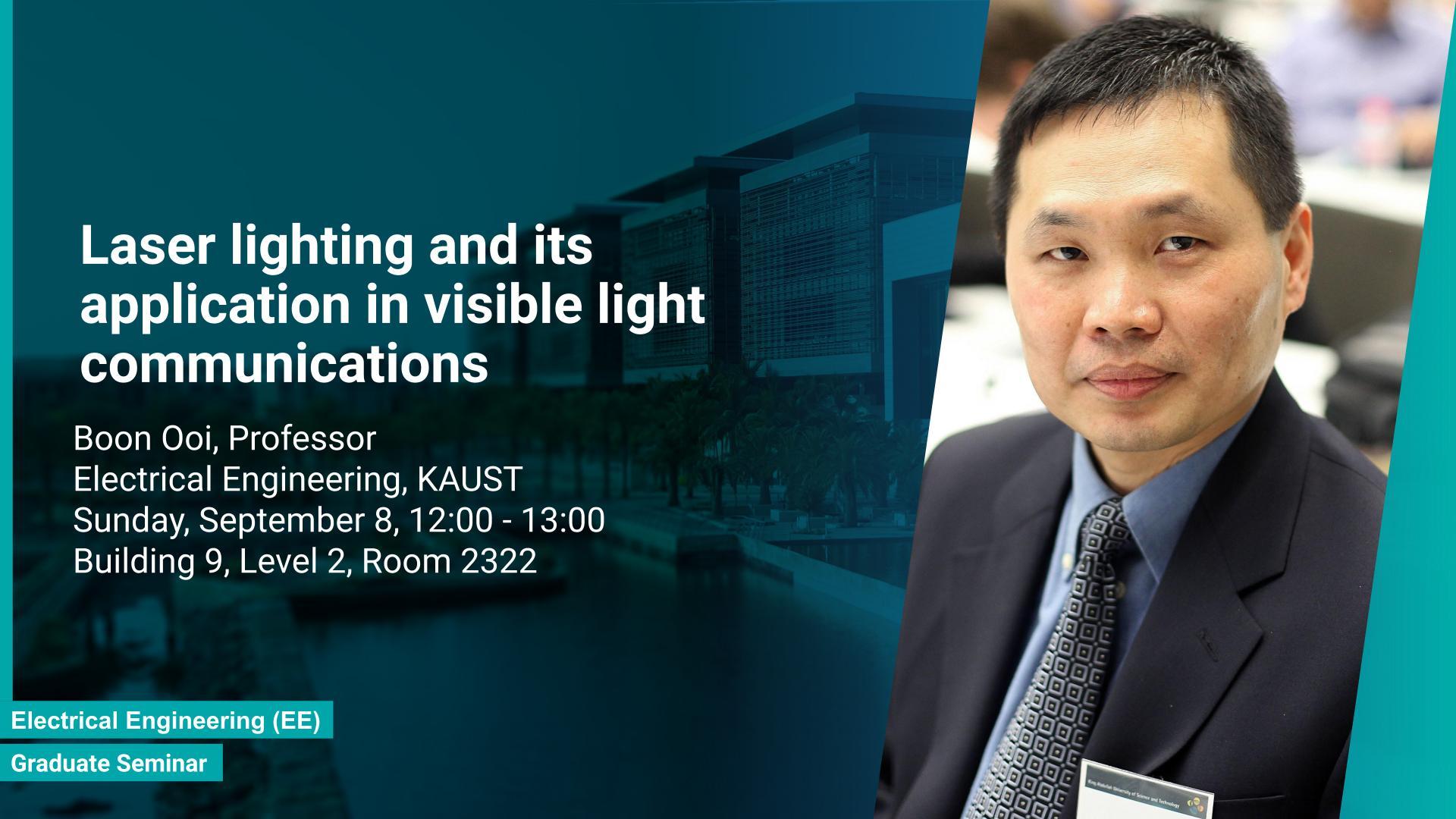Dr. Paul Anthony Haigh,Lecturer in Communications, Intelligent Sensing and Communications Group,Newcastle University
Tuesday, September 17, 2019, 13:00
- 14:00
B2 L5 Room 5220
Contact Person
Abstract
Visible light communications (VLC) is a hot topic in internet access networks, developing
PhD Degree,
Electrical and Computer Engineering
Thursday, September 12, 2019, 09:30
- 11:00
Building 3, Level 5, Room 5209
Contact Person
This thesis aims to investigate the microscopic characteristics of the nanowires and expand on the possibility of using transparent amorphous substrate for III-nitride nanowire devices. In this work, we performed material growth, characterization, and device fabrication of III-nitride nanowires grown using molecular beam epitaxy on unconventional substrates including silicon substrates and fused silica substrates. We also investigated the effect of various nucleation layers on the morphology and quality of the nanowires.
Professor,
Electrical and Computer Engineering
Sunday, September 08, 2019, 12:00
- 13:00
Building 9, Level 2, Room 2322
Contact Person
This talk provides an overview of the latest laser-based lighting and Gbit/s VLC and underwater communications. Recent progress of visible wavelength high-speed transmitters and receivers will also be discussed.
PhD Degree,
Electrical and Computer Engineering
Tuesday, July 30, 2019, 16:00
- 17:00
Building 3, Level 5, Room 5209
Contact Person
Ultraviolet (UV) group III-Nitride-based light emitters have been used in various applications such as water purification, medicine, lighting and chemical detection. Despite attractive properties such as bandgap tunability in the whole UV range (UV-C to UV-A), high chemical stability and relative low cost, the low quantum efficiency hamper the full utilization. This thesis aims to show alternative solutions to such problems by employing nanowires (NWs) structures, and target the eventual application of reliable and high power NWs-based light-emitting devices, enabling large-scale production using the established silicon foundry processes. Here, we present the improvement of injection current and optical power of AlGaN NWs LEDs by involving a metal bilayer thin film with a dual purpose: eliminate the potential barrier for carrier transport, and inhibit the formation of silicide.
Research Scientist,
Photonics Laboratory
Sunday, March 31, 2019, 12:00
- 13:00
B9 Hall 1
Contact Person
The wireless communication technology has been evolved from 1G to 5G networks. The next 6G era will bring about higher demands for bandwidth and speed. Visible light communication (VLC) shows great potential in providing high speed and secure communication link by utilizing the unregulated visible light spectrum to carry the data. In this seminar, the overview of VLC will be presented first. The devices and components developed for VLC network will then be reviewed and discussed in details. I will also briefly talk about the application of underwater communication application by using visible light at the end of the seminar.




